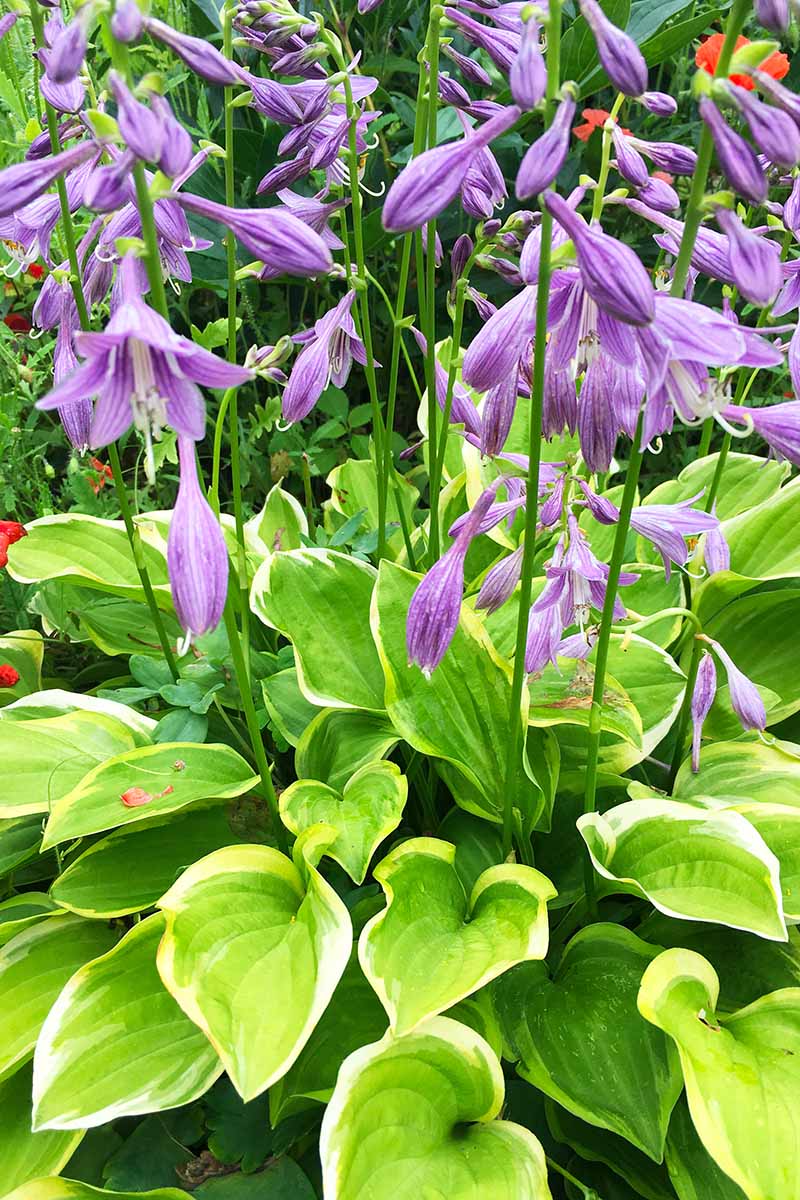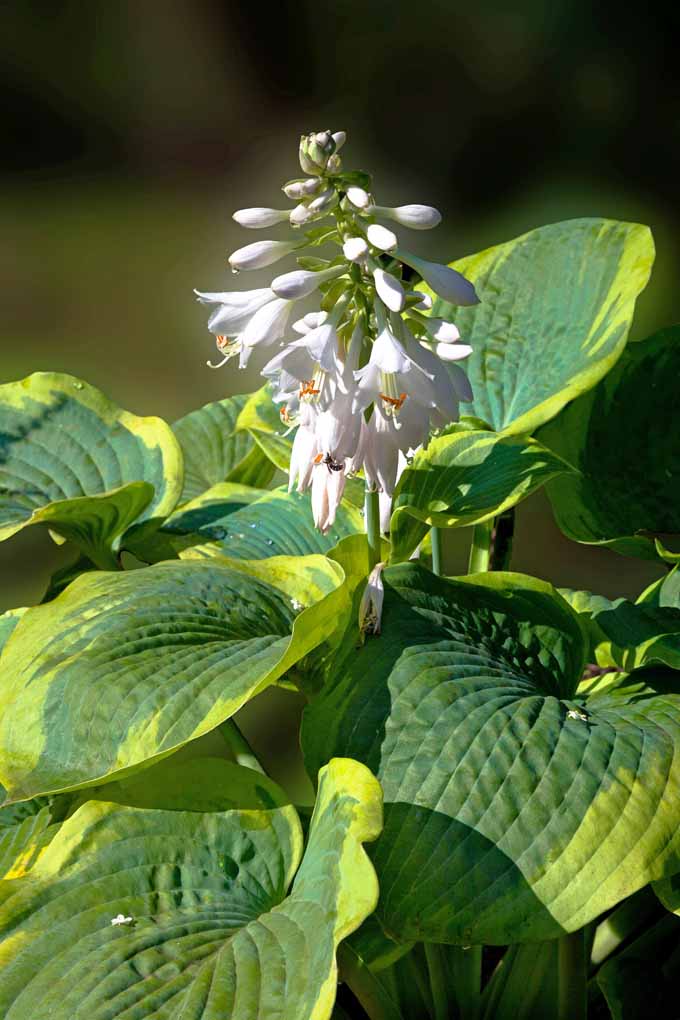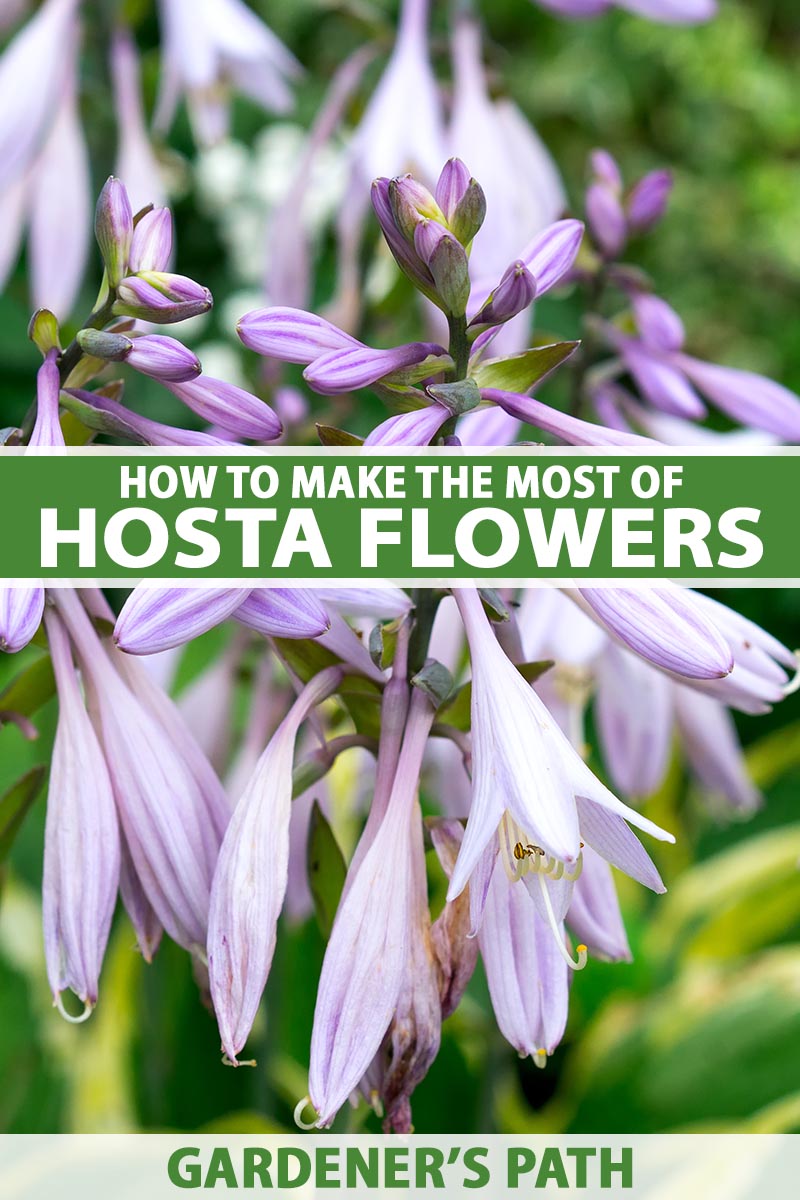Understanding the Life Cycle of Hostas
Hostas are popular perennial plants known for their attractive foliage and vibrant blooms. To understand how long hostas bloom, it’s essential to grasp their life cycle. Hostas typically grow in a cycle that spans several months, with distinct stages of growth, blooming, and dormancy. The blooming period is a critical phase in the life cycle of hostas, and it’s influenced by various factors, including climate, soil quality, and light exposure.
The life cycle of hostas begins in early spring, when the plants emerge from dormancy and start producing new growth. During this stage, hostas focus their energy on developing their foliage and root system. As the plants mature, they produce flower scapes, which eventually bloom into beautiful flowers. The blooming period usually lasts several weeks, depending on the specific hosta variety and growing conditions.
After the blooming period, hostas enter a stage of seed production, where they focus their energy on producing seeds. This stage is critical for the reproduction of hostas, as it allows them to propagate and spread. Once the seed production stage is complete, hostas begin to prepare for dormancy, during which they conserve energy and protect themselves from harsh weather conditions.
Understanding the life cycle of hostas is crucial for gardeners who want to know how long hostas bloom. By recognizing the different stages of growth and development, gardeners can provide their hostas with the necessary care and attention to promote healthy blooming. In the next section, we’ll explore the factors that affect hosta blooming periods and provide tips on how to encourage longer blooming periods in these beautiful plants.
What Affects Hosta Blooming Periods?
Hosta blooming periods can be influenced by a variety of factors, including climate, soil quality, light exposure, and watering habits. Understanding these variables is crucial for gardeners who want to know how long hostas bloom and how to optimize their blooming periods.
Climate plays a significant role in determining hosta blooming periods. Hostas typically thrive in temperate climates with moderate temperatures and adequate moisture. Extreme temperatures, either hot or cold, can shorten the blooming period of hostas. For example, a prolonged heatwave can cause hostas to bloom earlier and for a shorter duration, while a cold snap can delay blooming or prevent it altogether.
Soil quality is another critical factor that affects hosta blooming periods. Hostas prefer well-draining, fertile soil that is rich in organic matter. Poor soil quality can lead to weak and spindly growth, which can reduce the blooming period of hostas. On the other hand, high-quality soil can promote healthy growth and longer blooming periods.
Light exposure is also an essential factor in determining hosta blooming periods. Hostas typically require partial shade to full shade, depending on the variety. Insufficient light can lead to weak and leggy growth, while excessive light can cause hostas to become scorched and reduce their blooming period.
Watering habits can also impact hosta blooming periods. Hostas require consistent moisture, especially during the blooming period. Drought can cause hostas to drop their flowers and reduce their blooming period, while overwatering can lead to root rot and other problems.
By understanding these factors, gardeners can take steps to optimize their hosta blooming periods. In the next section, we’ll explore tips and advice on how to encourage longer blooming periods in hostas, including deadheading, fertilization, and pruning.
How to Encourage Longer Blooming Periods in Hostas
While hostas are known for their beautiful blooms, their blooming periods can be relatively short. However, with the right care and techniques, gardeners can encourage longer blooming periods in their hostas. In this section, we’ll explore some tips and advice on how to promote longer blooming periods in hostas.
Deadheading is a simple yet effective way to encourage longer blooming periods in hostas. By removing spent flowers, gardeners can stimulate the plant to produce more blooms. This technique is especially effective for hosta varieties that produce multiple flowers on a single stem. To deadhead hostas, simply snip off the spent flowers with scissors or pinch them off with your fingers.
Fertilization is another key factor in promoting longer blooming periods in hostas. Hostas are heavy feeders and require regular fertilization to produce healthy growth and blooms. A balanced fertilizer with a ratio of 10-10-10 (nitrogen-phosphorus-potassium) is suitable for hostas. Apply the fertilizer in the spring when the plants are actively growing, and again in the summer after the blooming period.
Pruning is also an essential technique for promoting longer blooming periods in hostas. By pruning the plant regularly, gardeners can encourage bushy growth and more blooms. Prune hostas in the spring, removing any dead or damaged leaves and stems. This will help the plant to focus its energy on producing new growth and blooms.
In addition to these techniques, gardeners can also try dividing and re-potting their hostas to promote longer blooming periods. Dividing and re-potting can help to rejuvenate the plant and encourage new growth and blooms. This technique is especially effective for older hosta plants that may be showing signs of decline.
By following these tips and techniques, gardeners can encourage longer blooming periods in their hostas and enjoy their beautiful blooms for a longer period. In the next section, we’ll explore some popular hosta varieties that are known for their longer blooming periods.
Hosta Varieties: Which Ones Bloom the Longest?
While all hostas are known for their beautiful blooms, some varieties are particularly notable for their longer blooming periods. In this section, we’ll highlight some popular hosta varieties that are known for their extended blooming periods, including ‘Gold Standard’ and ‘Francee’.
‘Gold Standard’ is a popular hosta variety that is known for its long-blooming period, which can last up to 6 weeks. This variety produces bright yellow flowers with a delicate, lacy texture, and is a great choice for gardeners who want to add a pop of color to their garden. ‘Gold Standard’ is also a relatively low-maintenance variety, making it a great choice for busy gardeners.
‘Francee’ is another popular hosta variety that is known for its long-blooming period, which can last up to 5 weeks. This variety produces delicate, white flowers with a subtle fragrance, and is a great choice for gardeners who want to add a touch of elegance to their garden. ‘Francee’ is also a relatively compact variety, making it a great choice for gardeners with limited space.
In addition to ‘Gold Standard’ and ‘Francee’, there are many other hosta varieties that are known for their longer blooming periods. Some other popular varieties include ‘Blue Angel’, ‘Golden Tiara’, and ‘Royal Standard’. These varieties offer a range of bloom colors and textures, and are a great choice for gardeners who want to add some variety to their garden.
When choosing a hosta variety for its blooming period, it’s also important to consider other factors such as climate, soil quality, and light exposure. By choosing a variety that is well-suited to your garden conditions, you can help to ensure that your hostas bloom for as long as possible.
In the next section, we’ll discuss some common mistakes to avoid when growing hostas, including over-watering, under-fertilizing, and inadequate sunlight. By avoiding these common pitfalls, you can help to ensure that your hostas bloom for as long as possible.
Common Mistakes to Avoid When Growing Hostas
While hostas are relatively low-maintenance plants, there are some common mistakes that can shorten their blooming period. In this section, we’ll discuss some of the most common mistakes to avoid when growing hostas, including over-watering, under-fertilizing, and inadequate sunlight.
Over-watering is one of the most common mistakes that can shorten the blooming period of hostas. Hostas prefer well-draining soil and can be susceptible to root rot if the soil is too wet. To avoid over-watering, make sure to check the soil moisture regularly and only water your hostas when the soil feels dry to the touch.
Under-fertilizing is another common mistake that can impact the blooming period of hostas. Hostas are heavy feeders and require regular fertilization to produce healthy growth and blooms. To avoid under-fertilizing, make sure to fertilize your hostas regularly, using a balanced fertilizer that is high in phosphorus.
Inadequate sunlight is also a common mistake that can shorten the blooming period of hostas. Hostas prefer partial shade to full sun, depending on the variety. To avoid inadequate sunlight, make sure to plant your hostas in a location that receives the right amount of sunlight for the variety.
Other common mistakes to avoid when growing hostas include planting them too deeply, not providing enough space between plants, and not dividing them regularly. By avoiding these common mistakes, you can help to ensure that your hostas bloom for as long as possible.
In the next section, we’ll provide some general care tips for hostas, including advice on planting, watering, and mulching. This will give you a comprehensive understanding of how to care for your hostas and promote healthy blooming.
Hosta Care 101: Tips for Optimal Blooming
Providing optimal care for your hostas is crucial for promoting healthy growth and blooming. In this section, we’ll provide some general care tips for hostas, including advice on planting, watering, and mulching.
Planting is a critical step in the care of hostas. When planting hostas, make sure to choose a location with the right amount of sunlight and soil quality. Hostas prefer well-draining soil that is rich in organic matter. Plant the hosta at the same depth as it was in the pot, and water thoroughly after planting.
Watering is also an essential part of hosta care. Hostas prefer consistent moisture, especially during the blooming period. However, make sure not to overwater, as this can lead to root rot and other problems. Water your hostas when the soil feels dry to the touch, and avoid getting water on the leaves to prevent fungal diseases.
Mulching is another important aspect of hosta care. Mulching helps to retain moisture in the soil, suppress weeds, and regulate soil temperature. Use a thick layer of organic mulch such as wood chips or bark, and keep it a few inches away from the base of the plant.
In addition to these care tips, make sure to fertilize your hostas regularly, using a balanced fertilizer that is high in phosphorus. This will help to promote healthy growth and blooming. Also, divide and re-pot your hostas every few years to maintain their health and vigor.
By following these care tips, you can help to ensure that your hostas bloom for as long as possible. In the next section, we’ll suggest ways to enjoy hostas even when they’re not in bloom, including using them as foliage plants, creating hosta arrangements, and incorporating them into garden designs.
How to Enjoy Hostas Beyond Blooming Season
While hostas are known for their beautiful blooms, they also offer a range of other benefits and uses beyond their blooming period. In this section, we’ll suggest ways to enjoy hostas even when they’re not in bloom, including using them as foliage plants, creating hosta arrangements, and incorporating them into garden designs.
One of the most obvious ways to enjoy hostas beyond their blooming period is to use them as foliage plants. Hostas have beautiful, heart-shaped leaves that come in a range of colors and textures, making them a great addition to any garden or indoor space. Simply plant the hosta in a container or in the ground, and enjoy its attractive foliage throughout the growing season.
Another way to enjoy hostas beyond their blooming period is to create hosta arrangements. Hosta leaves can be used to create beautiful arrangements, either on their own or in combination with other plants and flowers. Simply cut the leaves from the plant, and arrange them in a vase or container to create a stunning display.
Hostas can also be incorporated into garden designs to add texture, color, and interest. For example, you can use hostas as a border plant, or as a groundcover to fill in gaps between other plants. You can also use hostas to create a beautiful, low-maintenance garden feature, such as a hosta “river” or a hosta “stream”.
By using hostas in these ways, you can enjoy their beauty and benefits beyond their blooming period. In the next section, we’ll summarize the key takeaways from the article and encourage readers to try out the tips and advice provided to maximize their hosta blooming periods.
Conclusion: Maximizing Hosta Blooming Periods
In conclusion, understanding how long hostas bloom and how to maximize their blooming periods can help gardeners get the most out of these beautiful plants. By following the tips and advice provided in this article, readers can encourage longer blooming periods in their hostas, enjoy their beauty and benefits beyond their blooming period, and create stunning garden displays.
Remember, hostas are a versatile and low-maintenance plant that can add value and beauty to any garden or indoor space. By choosing the right variety, providing optimal care, and avoiding common mistakes, gardeners can enjoy their hostas for years to come.
Whether you’re a seasoned gardener or just starting out, we hope this article has provided you with the knowledge and inspiration you need to maximize your hosta blooming periods and enjoy these beautiful plants to their fullest potential.


:max_bytes(150000):strip_icc()/HostaElegans-GettyImages-564590310-306b385a2700417596b606e98ef50ca1.jpg)



